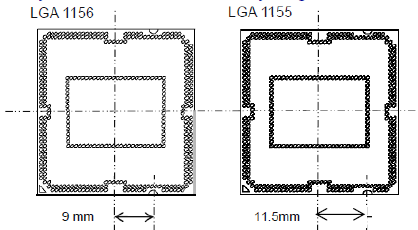Intel switches to new LGA 1155 connector
Detailed information about the Sandy Bridge architecture has become known today, to which Intel has been moving since 2011. It turns out that together with this architecture, Intel introduces a new socket for processors, in which there will be one contact less, the supply voltage will change, and the notch will be transferred two millimeters to the side, so that the new connectors will not be compatible with the old processors. Together with the processor will need to change the motherboard.

Sandy Bridge architecture is based on the same 32 nm process technology, but will include a new set of AVX (Advanced Vector Extension) vector commands and hardware support for AES (Advanced Encryption Standard) encryption functions.
The mainstream Sandy Bridge processors will replace Clarkdale and Lynnfield (Core i3 and Core i5), and LGA 1155 (H2) will be used instead of the LGA 1156 socket (H1). New processors will be released in I quarter. 2011 and will be two-and four-core.
')
There will be another special line of Sandy Bridge 'E' (that is, for “enthusiasts” or Extreme), there will be presented a completely new LGA 2011 socket instead of LGA 1366, this will happen no earlier than Q3. 2011
All chips under the LGA 1155 will include a graphics processor right in the core, and not on a separate chip.

Sandy Bridge architecture is based on the same 32 nm process technology, but will include a new set of AVX (Advanced Vector Extension) vector commands and hardware support for AES (Advanced Encryption Standard) encryption functions.
The mainstream Sandy Bridge processors will replace Clarkdale and Lynnfield (Core i3 and Core i5), and LGA 1155 (H2) will be used instead of the LGA 1156 socket (H1). New processors will be released in I quarter. 2011 and will be two-and four-core.
')
There will be another special line of Sandy Bridge 'E' (that is, for “enthusiasts” or Extreme), there will be presented a completely new LGA 2011 socket instead of LGA 1366, this will happen no earlier than Q3. 2011
All chips under the LGA 1155 will include a graphics processor right in the core, and not on a separate chip.
Source: https://habr.com/ru/post/91649/
All Articles